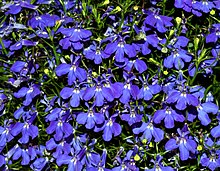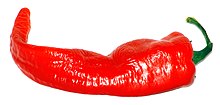Samuel Thomson
Samuel Thomson (9 February 1769 – 5 October 1843) was a self-taught American herbalist and founder of the alternative system of medicine known as "Thomsonian Medicine", which enjoyed wide popularity in the United States during the 19th century.
Early life
Thomson was born in Alstead, New Hampshire, the second-eldest of six children. His father, John Thomson, was a farmer and the family lived in a remote country area which Thomson described as a "wilderness". From a young age he became curious about the various plants which he saw growing in the countryside and their medicinal uses. Much of his early knowledge was acquired from a local widow woman, who had acquired a reputation as a healer due to her skill with herbal remedies. Thomson also used to sample the plants he found growing in the wild - in this way he discovered Lobelia, which became an important remedy in the system of medicine he later founded. Unaware of the medicinal properties of the plant, Thomson used to trick other boys into eating it, which caused them to vomit due to its emetic nature.[1]
At the age of sixteen he had hoped to study with a local "root" doctor (at that time there was no official licensing of the medical profession) but his parents did not think he had the education and could not spare him from his work. Thus, he became resigned to his life as a farm laborer. At the age of nineteen, he sustained a severe injury to his ankle while chopping wood which, despite the ministration of a local doctor, refused to heal. His condition worsened and the family feared for his life. He decided to treat the wound himself with a comfrey root and turpentine plaster - after some weeks he was able to make a recovery.[1]
At the age of 21, Samuel's father left for Vermont, placing Samuel in charge of the farm and leaving his mother and sister in his care. Soon after, his mother became ill with measles, and in spite of the efforts of several doctors, Samuel's mother died when the measles turned into "galloping consumption." When Samuel also became ill with measles, he cured himself using herbal remedies.[2]
One year later, Thomson married Susanna Allen on July 7, 1790 in Keene, New Hampshire. After the birth of their first child, Susanna became very ill, and a parade of seven conventional doctors were unable to cure her. Samuel arranged for two "root doctors" to treat his wife, who returned to health the next day.[2] Thomson and Susanna went on to have eight children.
Development of the Thomsonian System
When his wife nearly died after being treated via conventional medicine, Thomson consulted two herbalists, who treated his wife and taught Thomson some of their methods. Subsequently, Thomson used steambaths and herbs to cure one of his daughters and a son, and a few of his neighbors.[2]
In this way, Thomson developed his own method, the Thomsonian System, and practiced in Surry, New Hampshire and the adjoining towns. During the first half of the 19th century his system had numerous followers, including some of his sons. It was based upon opening the paths of elimination so that toxins could be removed via physiological processes. This was not unique to Thomson: so-called "regular physicians" used calomel, a toxic mercury-based compound, to induce vomiting and purgation. Thomson's more moderate and less toxic means attracted large numbers of followers.[3]
His system of medicine appealed to the egalitarian anti-elitist sentiments of Jacksonian America in the 1830s, and families far from established towns came to rely on it. Licensed doctors, and their methods such as bloodletting, came under intense scrutiny during this period. Thomson's system was appealing because it allowed each individual to administer his or her own treatment.

Eventually, Thomson came to believe that exposure to cold temperatures was an important cause of illness and that disease should be treated by restoring the body's "natural heat." Thomson's methods for doing this included steam baths, cayenne pepper, laxatives, and administration of the emetic Lobelia inflata (also known as "Indian tobacco" or "puke weed") to induce vomiting.

After practicing this form of medicine for about ten years, Thomson wrote a book called "New Guide to Health; or Botanic Family Physician" in 1822. Thomson sold "patents" to use his system of medicine to any family for $20. Right-holders were able to purchase Thomson's herbs and formulas, which he distributed from a central warehouse, and a copy of Thomson's book. He sold over 100,000 patents by 1840.[4] His suggestion for a family's medicine stock (and his contempt for conventional medicine) are demonstrated by this quote from his book:
One ounce of the emetic herb, two ounces of cayenne, one-half pound bay-berry root bark in powder, one pound poplar bark, one pint of the rheumatic drops. This stock will be sufficient for a family for one year, with such articles as they can easily procure themselves when wanted, and will enable them to cure any disease which a family of common size may be afflicted with during that time. The expenses will be small and much better than to employ a doctor, and have his extravagant bill to pay.
Thomson took great care to guard his patented cures, and used legal authority to prevent others from manufacturing and selling lobelia pills. Thomson's monopoly was broken by Alva Curtis, who created the "Independent Thomsonian Medical Society" to train practitioners, who in turn gave rise to the "Eclectic medicine" movement.
Part of Thomson's downfall was due to a bombastic personality and an arrogance which would not permit him to interact with regular doctors or even to pursue additional studies in anatomy and physiology. Others who received his training broke with him and went on to pursue advanced medical education, founding Eclectic medicine which drew from a variety of sources and included a wider variety of treatment modalities and medicinal substances.[5]
Taken to court

Licensed doctors, however, came to resent Thomson's popularity, as well as his criticisms of their techniques. In 1809, a physician named French accused Thomson of killing a patient, Ezra Lovett, through the administration of excessive amounts of Lobelia. Thomson claimed his patient was cured, but then died when he unwisely ventured into the cold instead of recuperating in his warm home. The prosecution claimed excessive vomiting, brought on by Thomson's administration of lobelia, was to blame. Ultimately, Thomson was acquitted when one of his defense counsel demonstrated that one of the prosecution's exhibits, labeled "Lobelia", was actually the plant marsh rosemary (Limonium), by consuming some in court. Subsequent literature reviews have failed to demonstrate any deaths or symptoms more dangerous than emesis from even significantly larger doses than Thomson administered in the Ezra Lovett case.[6]
Despite Thomson's acquittal, many states passed "Black Laws," restricting the practice of unconventional medicine. Black laws were labeled as such by unconventional medical practitioners as a way of comparing them with laws restricting African Americans from practicing medicine and engaging in other activities. The laws were of small practical effect and were mostly repealed by the 1820s.[7][8]
Herbalist Michael Moore, in his introduction to Eclectic physician John Uri Lloyd's biography of Thomson, gives a flavor of the debate of the times:
Thomson's own description of his legal problems is given in flat, understated New England dryness and couched in seeming venal paranoia.... After finishing the later material, offering 3rd party perspective, you realize that Thomson's movement had affected a million or more Americans, started a medical reformation that would not peak for another 50 years, and the brightest medical minds of the time were split vehemently both against and for Thomson's right to practice...bitterly divided between Federalists and Republican politics...Populists and Elitists...rural and urban. The tribulations of this former pig farmer rocked the young republic for over a decade and were headlines everywhere. Because of the success of Thomson and his followers, states began, for the first time, regulating medical practice along party and class lines. Messy and fascinating stuff.[9]
See also
References
- ^ a b Lloyd J.U. The Life and Medical Discoveries of Samuel Thomson, p10 ff.
- ^ a b c Harvey. Toadstool Millionaires", Ch. 4
- ^ Dr. Samuel Thompson's Botanic System - from The History of Warren County, Ohio (W. H. Beers & Co. of Chicago, 1882), p304 ff.
- ^ Malstrom, Stan. Dr. Samuel Thomson (Herbalist, Vol 1, No. 7, 1976).
- ^ Cabrera, Chanchal. The History of Western Herbal Medicine (Webpage, 2006).
- ^ Bergner, Paul. Lobelia toxicity: A Literature Review (Medical Herbalism Journal, Vol. 10, Nos. 1-2).
- ^ The Influence of Slave Healers - Ch.2 of "Bodies of Knowledge: The Influence of Slaves on the Antebellum Medical Community" (Virginia Tech University thesis, 1997).
- ^ Guild, Jane Purcell Guild, Black Laws of Virginia: A Summary of the Legislative Acts of Virginia Concerning Negroes from Earliest Times to the Present (Whittet & Shepperson, 1936); reprinted, (New York: Negro Universities Press, 1969)
- ^ Classic works in herbal medicine (webpage)
Further reading
- Lloyd, John Uri. Life and Medical Discoveries of Samuel Thomson (Bulletin of the Lloyd Library of Botany, Pharmacy and Materia Medica, 1909).
- Thomson, Samuel. New guide to health, or Botanic family physician (Simpkin, Marshall & Co. 1849).
- Thomson, Samuel. A Narrative of the Life and Medical Discoveries of Samuel Thomson, Containing an account of his system of practice and the manner of curing disease with vegetable medicine, upon a plan entirely new. Tenth Edition. (Jarvis, Pike & Co.: Columbus, Ohio, 1835).
- Whorton, James C. Nature Cures: The History of Alternative Medicine in America (Oxford University Press, 2002).
- Young, James Harvey. The Toadstool Millionaires: A Social History of Patent Medicines in America before Federal Regulation (Princeton 1961).
- Caldecott, Todd. History of Physiomedicalism
External links
- Classic works in Herbal Medicine. Various e-books on Thomsonian medicine including Life and Medical Discoveries of Samuel Thomson by J. U. Lloyd (1909) and A Guide to Health etc by Benjamin Colby (1846).
